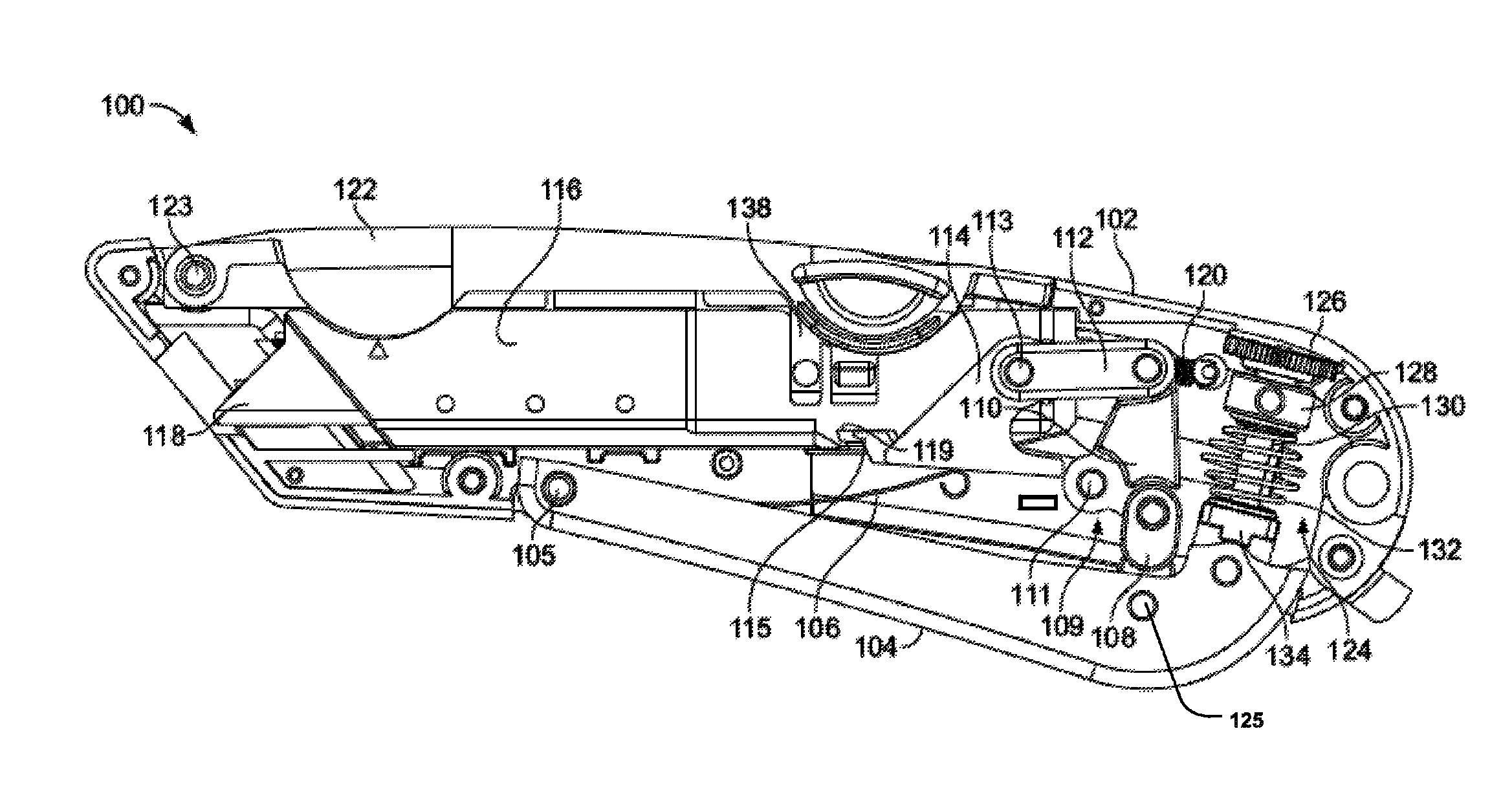Adjustable utility knife
a utility knife and adjustable technology, applied in the direction of thrusting weapons, white arms/cold weapons, weapons, etc., can solve the problems of high operator injury risk, user injury or other injuries, and high chance of operator injury, so as to reduce friction, save cutting mechanism, and reduce energy and labor
- Summary
- Abstract
- Description
- Claims
- Application Information
AI Technical Summary
Benefits of technology
Problems solved by technology
Method used
Image
Examples
Embodiment Construction
[0025]FIGS. 1A-C illustrate a knife 100, which may be used to cut rigid or semi-rigid materials, such as, for example, corrugated board, cardboard or other paper products, rubber, plastic Styrofoam, or any other appropriate material. The knife 100, generally, is a handheld device operated by either a left-handed or right-handed user with equal ease. In some implementations, the knife 100 allows the user to select a blade position, which controls an extension length of the blade from the handle of the knife 100. For example, in some aspects, the user may select one of three different blade positions. Regardless of the selected position, the knife 100 allows the user to actuate a trigger, thereby extending the blade from the knife handle so that the blade can engage a piece of material. Once the user finishes cutting the material as desired, the user may disengage the blade from the material. Once disengaged, the blade is automatically retracted within the knife handle by a tension sp...
PUM
 Login to View More
Login to View More Abstract
Description
Claims
Application Information
 Login to View More
Login to View More - R&D
- Intellectual Property
- Life Sciences
- Materials
- Tech Scout
- Unparalleled Data Quality
- Higher Quality Content
- 60% Fewer Hallucinations
Browse by: Latest US Patents, China's latest patents, Technical Efficacy Thesaurus, Application Domain, Technology Topic, Popular Technical Reports.
© 2025 PatSnap. All rights reserved.Legal|Privacy policy|Modern Slavery Act Transparency Statement|Sitemap|About US| Contact US: help@patsnap.com



